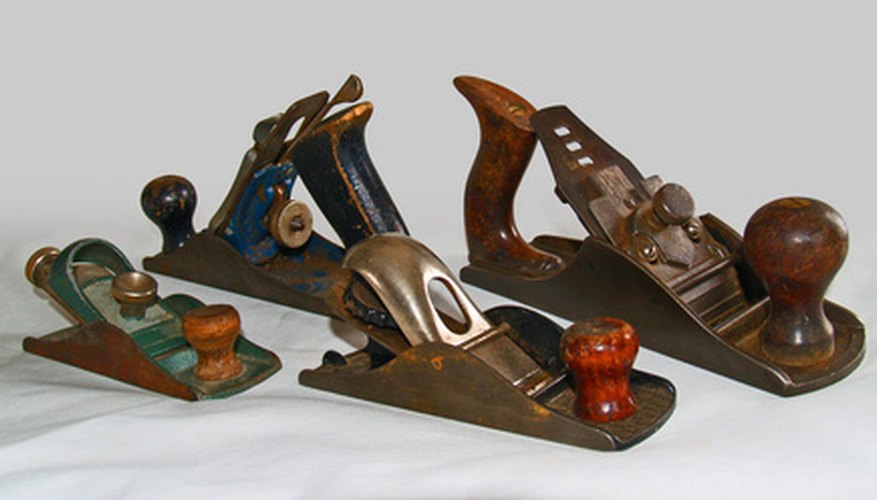From the mid-1800s until World War II, the Thomas Norris & Son Co. in Britain made high-quality woodworking planes. These cast iron or steel planes with inlays of rosewood, ebony or walnut are highly sought-after by collectors today.
Look for the Norris Adjuster. Norris planes were renowned for their patented single-lever plane iron adjuster that could adjust both vertically and horizontally. Competing planes needed to be adjusted by tapping the mechanism with a hammer.
- From the mid-1800s until World War II, the Thomas Norris & Son Co. in Britain made high-quality woodworking planes.
- Competing planes needed to be adjusted by tapping the mechanism with a hammer.
Check the sole of the plane. Norris planes were made with either a cast iron or a steel sole. The steel sole was constructed using an unusual and specific double-dovetail joint in which the tails were intentionally cut long before being hammered back and filed smooth.
Disassemble the plane and check for a wooden wedge blade clamp (typically made of ebony, rosewood or walnut). Norris believed using wood for the blade clamp helped reduce blade chatter, particularly on block planes.
Look for a decorative knurled finial on top of the hold-down screw. Norris planes used a distinctive design on the top of the hold-down screw until the late 1920s.
Remove the cutting iron and check for any identifying marks. Many Norris plane cutting irons have the words "Norris London" etched into the front.
TIP
If the plane is well-worn, some of the distinctive characteristics may be difficult to detect. Use a magnifying glass and good lighting to help with identification.
